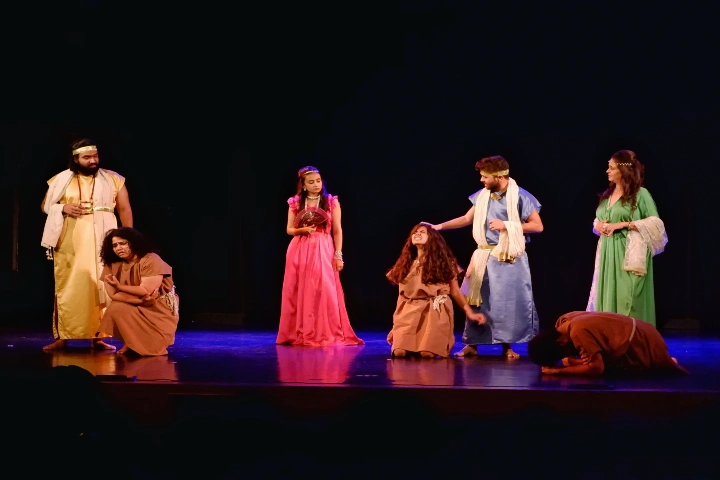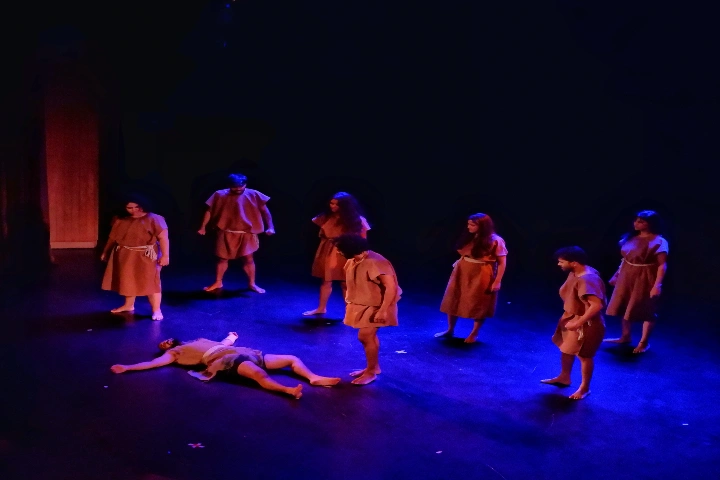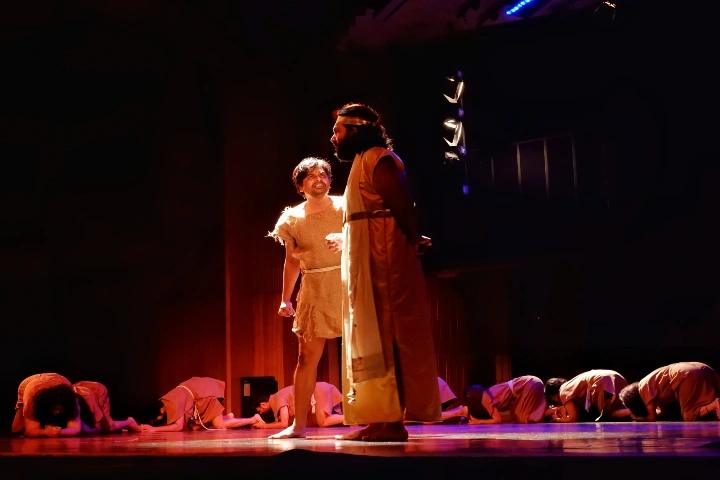Spartacus was a mere gladiator whom Greek essayist Plutarch described as a “Thracian of Nomadic stock”, yet his name is etched in history for all times to come. As a legendary leader, he headed a major slave uprising against the mighty Roman Republic known as the Third Servile War from 73 BC to 71 BC.
Bringing the story of this dynamic and charismatic personality on stage in an 80-minute duration play is no easy task yet director Tarique Hameed’s Hindi version of the original epic play “Spartacus” by Badal Sircar, staged by artists of Wings Cultural Society did it with aplomb.
Symbolising the fight of the oppressed and exploited class against the elite, the story of the slave-turned-gladiator who challenged the might of Romans is as pertinent today as it was several centuries ago. Agreeing with this, Hameed told India Narrative, “many kings and kingdoms have come and gone but the labour and oppressed class remains constant throughout history. Their lives are still miserable and they sometimes lack basic human rights. This play speaks out against tyranny.”

The emphatic line in the play about Spartacus and his struggle being eternal best sums the essence of the story.
Translated by Rati Bartholomew and Virendra Saxena, the entire story of the slave rebellion and its leader is encapsulated in five parts – capturing of people; selling of the slaves; toil by the slaves; gladiators preparing for the arena; and the crucifixion of the rebels.
What stands out in the play is the absence of props and extra items – used in theatre to convey and heighten the emotions and nuances. Yet the energy and verve of the actors conveys the theme and story to the audience so well that they become engrossed and part of the proceedings!
Highlighting this aspect, Hameed said: “Badal Sircar the playwright of the play, is known for doing minimalist street theatre. The play was written keeping that in mind. Mime is used to portray various actions, starting from the first scene itself. When the play has no props, the responsibility of actors is definitely greater. They have to carry the play and keep it crisp and convincing.”
When asked on the role of music and lights, the director told India Narrative: “Music adds much important adrenaline to the action scenes. Lights are important to show various effects and different scenes have varied lighting. An intense scene will have a darker light on the stage while scenes with death and misery will have red.”
Music for the play was given by Ayush Sharma and Rochana More while Ranjan Basu was responsible for lights.

The actors all gave their best and it was reflected in the production. Among the actors Prince who played Spartacus and Ritvik Mohan Bhagat who essayed Marcus Licinius Crassus, who eventually quelled the slave uprising, stood out for their performance. A number of performers were freshers who did well. Working with them according to Hameed helps as they are enthusiastic and having no notions about acting techniques, they imbibe instructions better. “They don’t know much about correct stage movements, dialogue delivery etc. but these aspects are taken care of by acting workshops.”
The play was staged at India Habitat Centre’s Stein Auditorium, New Delhi.














